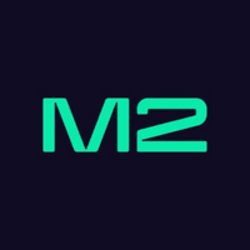
What Is IOTA?
IOTA is a distributed ledger technology for a new digital economy in a connected world. IOTA’s ledger utilizes a cryptocurrency – also called IOTA – to account for transactions within its network.
Key Takeaways
-
IOTA is a distributed ledger created to handle transactions between devices in the IOTA ecosystem.
-
IOTA’s ledger, Tangle, is built using Directed Acyclic Graph (DAG) technology that is designed to support frictionless value and data transfer, where transactions can be added in parallel.
eToro is a publishing partner of CoinGecko
In continuation of eToro’s series of introductions to cryptocurrencies, we are now covering another popular cryptocurrency: IOTA. We will be going through the basics of IOTA and reviewing its features, purposes, and utilities.
Launched in 2015, IOTA is a distributed ledger built to redesign the way people and devices connect to share information and value, removing middlemen. IOTA is widely known within the crypto space for its primary technology, Tangle.
In this article, we’ll explore the basics of IOTA, its main technology and future plans for the Foundation.
Understanding IOTA
It is worth noting that IOTA does not run on a blockchain. IOTA’s ledger, Tangle, is built using the Directed Acyclic Graph (DAG) technology, which does not follow a straight chain-like pattern like blockchains. However, just like any other cryptocurrency, IOTA runs on a peer-to-peer network where transactions get validated in a decentralized manner.
To expand the usage of the network among connected apps, the IOTA Foundation— a non-profit organization responsible for the ledger — collaborates with a global ecosystem and partners to research and develop the technology.
Over the years, IOTA has collaborated with companies and institutions to help build real-world applications with innovative technologies. These include the European Commission, Jaguar Land Rover, Dell, EDAG, EngieLab, Object Management Group, STMicroelectronics, E-Class, Trademark Africa, TMForum, ClimateCheck, Zebra Technologies, BiiLabs, TechMahindra, Filancore, Tanglehub, Sopra Steria, Akkodis, The Linux Foundation, FiWare, and Servrox Solutions.
The IOTA token is the native currency on the IOTA network. It is used to transfer value and data and enable feeless micro-payments.
What Issues Does IOTA Solve?
IOTA effectively resolves technological and blockchain challenges using its DAG architecture. This advanced framework allows for concurrent transaction processing, significantly boosting scalability and throughput, crucial for overcoming traditional blockchain limitations.
The Tangle, IOTA’s innovative network design, eliminates common blockchain bottlenecks, enabling efficient data and value exchanges without central validation.
IOTA’s approach to Decentralized Identifiers (DID) revolutionizes secure and verifiable online interactions, marking a significant advancement over existing blockchain identity management systems.
Emphasizing feeless transactions, IOTA is uniquely positioned for a wide range of applications, from microtransactions to extensive business operations. This positions IOTA as a solution for the challenges faced in blockchain and digital transaction technologies.
Tangle
IOTA is built on a directed acyclic graph (DAG), known as the Tangle.
Designed to support frictionless value and data transfer, it isn’t comprised of transactions clustered into blocks and processed in linear series but instead as a collection of individual transactions entangled together.
To create a transaction in the Tangle, the user needs to select between two and eight existing transactions and verify them. As there are no miners in the Tangle, those who verify other transactions are the same users who make transactions.
Unlike blockchain alternatives, the Tangle allows transactions to be added in parallel; it also boasts low resource requirements, as well as zero-token fee and fast transactions with finality within seconds. The Tangle has also one of the smallest – if not the smallest – energy footprints of any public DLT according to the most recent study.
How Is Consensus and Validation Managed In the IOTA Network?
In Distributed Ledger Technology (DLT), a consensus mechanism is vital for node agreement on the ledger’s contents. IOTA uses a delegated Proof of Stake for its consensus, allowing any node to become a validator and join a size-limited validator committee for consensus voting. IOTA 2.0 enhances this process by regularly issuing validation blocks through these committees, streamlining communication, and speeding up confirmations.
IOTA’s consensus is anchored by three mechanisms: Parallel Writing for simultaneous block addition and validation across nodes, On-Tangle Voting assigning vote power based on staking and delegation, and Approval Weight dominance in double-spend scenarios.
Diverging from energy-intensive traditional blockchain mining, IOTA’s approach is environmentally friendly, consuming minimal electricity. This efficiency positions IOTA as a sustainable DLT choice, in stark contrast to blockchains that may use significant energy resources. More details on IOTA 2.0’s consensus can be found on the IOTA wiki.
What Is Next for IOTA?
IOTA has a roadmap detailing its key objectives.
Taking place across stages In 2024, the IOTA 2.0 update will deliver full decentralization by replacing the central Coordinator with a revolving committee of validator nodes. The update also introduces new features like an innovative user accounts system, feeless transactions for token holders, sustainable tokenomics, and a collaborative consensus mechanism.
Further Reading
If you want to learn more, visit the IOTA official site.
eToro is a publishing partner of CoinGecko
Tell us how much you like this article!
CoinGecko
CoinGecko’s editorial team comprises writers, editors, research analysts and cryptocurrency industry experts. We produce and update our articles regularly to provide the most complete, accurate and helpful information on all things cryptocurrencies.
Follow the author on Twitter @coingecko












































































Be the first to comment